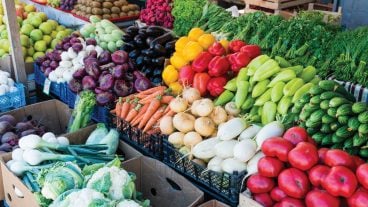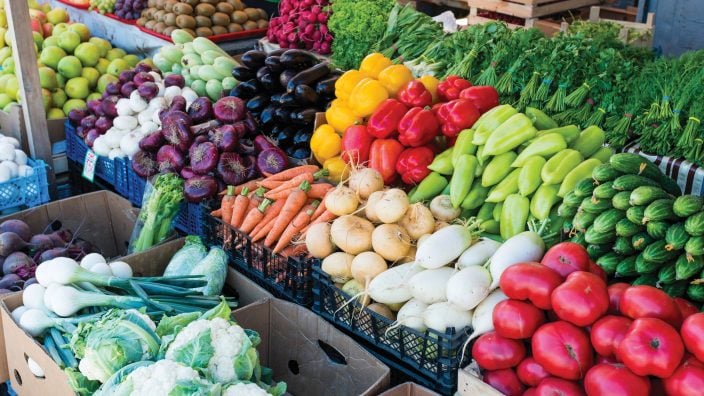Farmer’s Guide to Trucking Regulations available to Ohio Farm Bureau members
The guide includes a farm driver checklist, overview of state and federal regulations and exemptions, CDL qualifications and more.
Read More
With Thanksgiving gone by, we will celebrate Christmas in a much different way than usual. For Betty and I, we usually get together with Betty’s family, about 45 to 55 of us in her daughter’s home.
This year, it will just be Betty and me celebrating a quiet day at home. Some of our family, who live a distance away, will be having small gatherings for dinner. Because of our ages, we avoid being with groups even though none of them have been exposed to the virus.
We are planning the day with some of the foods that are a tradition like mince pie.
Even with all the problems we are experiencing, we still have much to be thankful for. One of the important things to be thankful for is an abundance of food available for us to choose from for Christmas and days after that. Our food supply starts with our farmers where the basic ingredients are produced.
From there, it goes through several steps from being hauled to the processor where it is put into forms that we like, then packaged and taken to the store ready for us to buy. We hear this called “the food chain,” and some times we can have a problem with some of the links in that chain.
Then we can have temporary shortages of some foods. One of those this past year was a shortage of some cuts of meat caused by a lack of employees in meat-packing plants. This was because of the virus that is a serious problem.
Thinking about the basic supplies such as corn, soybeans and wheat, we are experiencing a good year. First, the spring weather cooperated, and farmers were able to get fields tilled and crops in the ground. We had a reasonably good growing season with some areas needing rains and fields got dry.
Generally, we got enough moisture for most farmers to have good crops. Early to mid-November brought some excellent weather for harvest.
Right now, most and perhaps all of the soybean crop is harvested and in the bin or sold to one of the large grain elevators in the area.
One problem surfaced about two weeks ago when too many soybeans were coming into the major elevators and they had to stop taking them temporarily. They had to get them hauled to major terminals to get the local bins down so they could accept more.
Overall, soybean yields were good to excellent. They were also dry enough that they need little if any drying before going into the large bins. Most farmers were pleased with both the quantity and quality they were bringing to the elevator.
Another good thing has been the price. Much of the time, farmers were getting $11 per bushel for their beans, a price they hadn’t seen for a long time.
Corn harvest has also been going on full speed when weather permits. A lot of acres have been combined and there are still quite a few out there. Harvesting soybeans is important before snow because that will cause them to fall and hard to harvest. Corn will stand some snow and cold weather so it usually gets harvested after beans. Wet, heavy snow the first of December did cause considerable corn to go down.
Corn prices have also been good, running around $4 per bushel recently. It has also been coming into the elevator needing some drying. Yields have also been good to exceptional, depending on the soil where it was grown.
As we celebrate Christmas in our quiet ways this year, let us be thankful for a good crop year for local farmers and for the plentiful and healthy food they help put on our tables.
Submitted by John Parker, professor emeritus, The Ohio State University and an independent writer for Farm Bureau and other organizations.
OFBF Mission: Working together for Ohio farmers to advance agriculture and strengthen our communities.


The guide includes a farm driver checklist, overview of state and federal regulations and exemptions, CDL qualifications and more.
Read More


The Small-Scale Food Business Guide covers federal and state regulations for selling food products such as raw meat, dairy, eggs, baked goods, cottage foods, fruits and vegetables, honey and more.
Read More

ODA will enroll 500,000 acres into the program for a two-week sign-up period, beginning April 22, 2024, through May 6, 2024. Contact local SWCD offices to apply.
Read More

Katie Share of Columbus has been named ExploreAg and Youth Development Specialist for Ohio Farm Bureau.
Read More

Mary Klopfenstein of Delphos has been named Young Ag Professional and Ag Literacy Program Specialist for Ohio Farm Bureau.
Read More

The plan has been updated to give sole proprietors access to more rate stability and a smart solution that offers potential savings on health care.
Read More

The American Farm Bureau Federation, in partnership with Farm Credit, is seeking entrepreneurs to apply online by June 15 for the 2025 Farm Bureau Ag Innovation Challenge.
Read More

Adele Flynn of Wellington has been elected treasurer of the Ohio Farm Bureau Federation and now holds the third highest elected office in Ohio’s largest and most influential farm organization.
Read More

Producers are urged to work with their veterinarian to practice enhanced biosecurity measures and review and limit cattle movements within production systems.
Read More

The changing seasons bring with them the need to thoroughly inspect pole barns for any damages that may have occurred during the winter months.
Read More